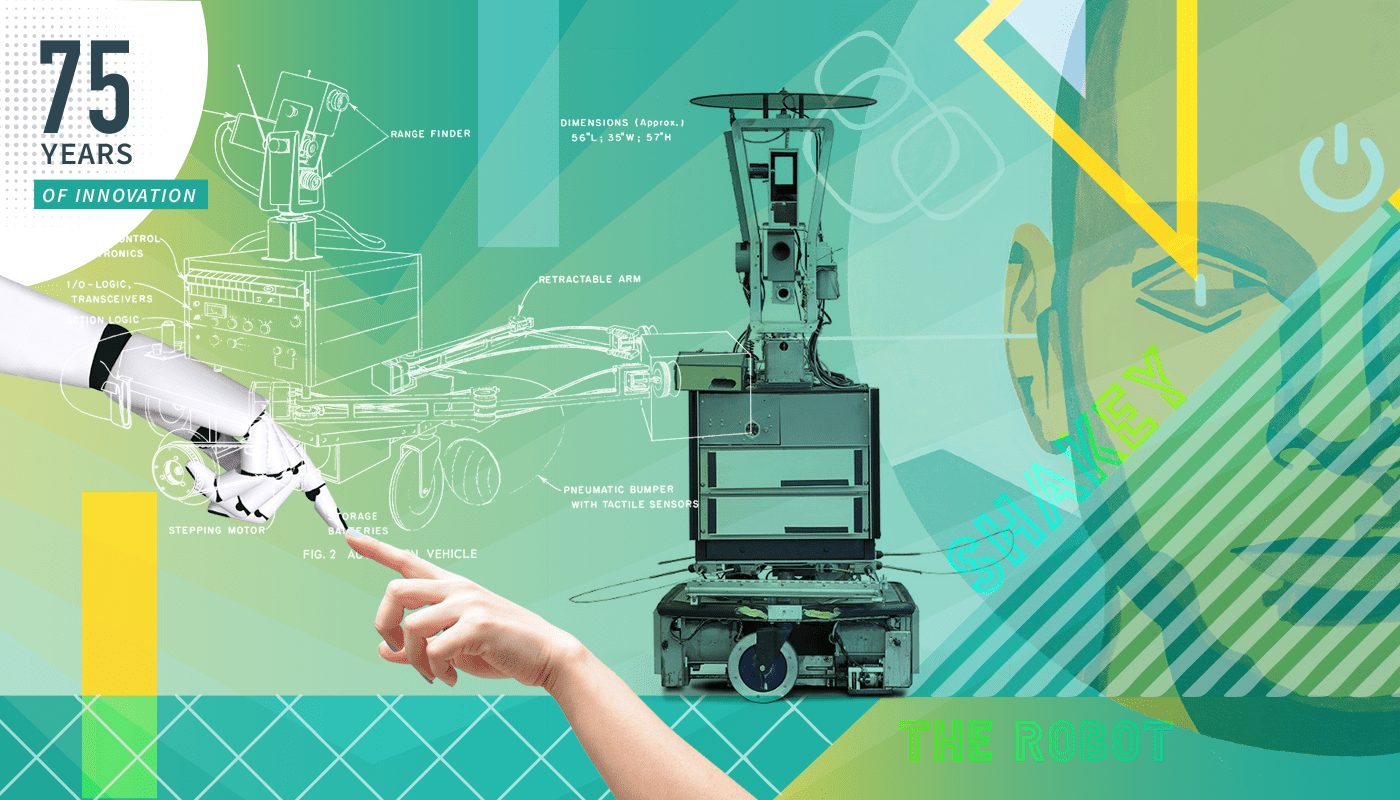The 75 Years of Innovation series highlights the groundbreaking innovations spanning from SRI’s founding in 1946 to today. Each week, SRI will release an innovation, leading up to its 75th anniversary in November 2021.
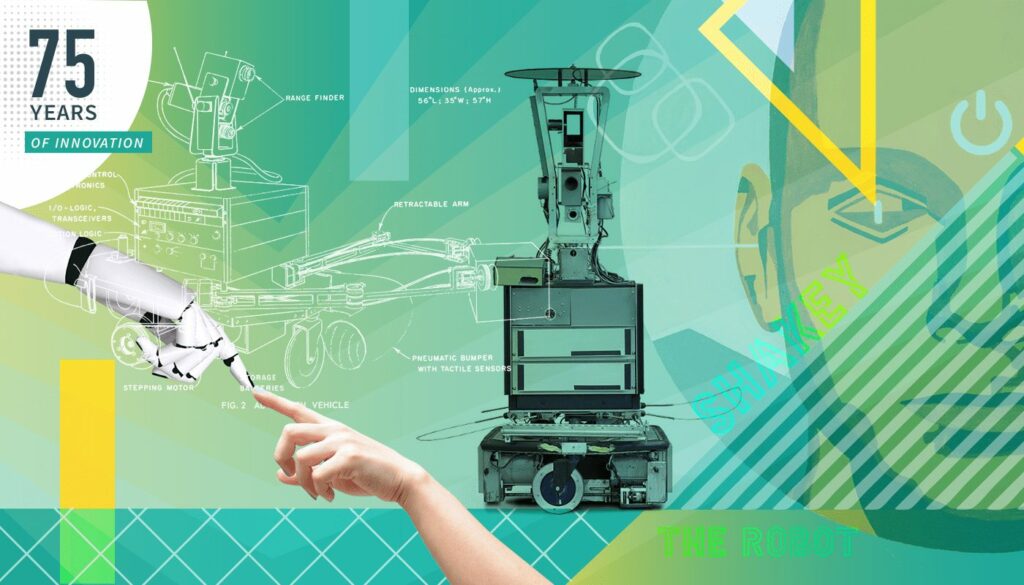
It came, it saw, it shook up AI
“Shakey” the Robot
Today Roomba, the robot vacuum cleaner, whizzed around, stealthily cleaning my carpets, after having mapped out the room.
I also, today, asked Siri for a weather update as I decided what to wear for an evening out.
As I drove to the event, my mobile GPS mapping system guided me to my destination.
My next car may be self-driving…
Increasingly, the basic things we do in our everyday lives are augmented by Artificial Intelligence (AI) and robotics.
Much of this technology is because of one, very special, SRI International invention that went by the name of “Shakey the Robot”.
Shakey, who has been called the “great-grandfather of self-driving cars and military drones” by John Markoff, Historian at the Computer History Museum, certainly shook the world back in the 1960s when it was first conceived. This is Shakey’s story…
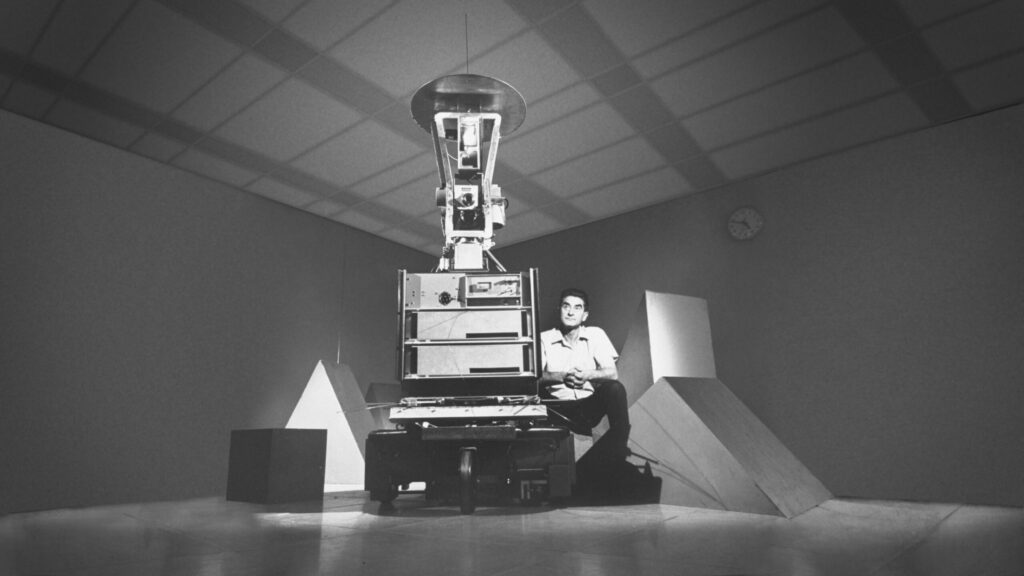
Shaking up the world of AI back in the swinging (and shaking) 1960s
The architecture and algorithms that were behind Shakey the Robot became the model for AI-enabled robotic systems the world over. That claim alone is special, but there were many features of Shakey that placed it in the very unique position of inventions that changed the world. But what was so special about Shakey?
Shakey encapsulated innovation. The key to Shakey’s success and paradigm status was the integration of several types of AI into a single system — perhaps it was the excitement of this that made Shakey, shake? This ‘AI ecosystem’ is what made Shakey so special back then and continues to be special in the application of AI now.
The AI ecosystem that Shakey’s components made up, included:
- A TV camera and optical range finder (Shakey’s computer vision, to observe its environment)
- An Antenna radio link (Shakey’s communication system back to base, aka, the controlling computer
- Bump detectors (part of Shakey’s navigational system)
- Push bar to move objects
Using this ecosystem of technology components, Shakey could:
- Locate a specific spot in a 7-room environment
- Find designated boxes and push them together into groups, according to instructions
- Avoid obstacles
The technology of Shakey the Robot
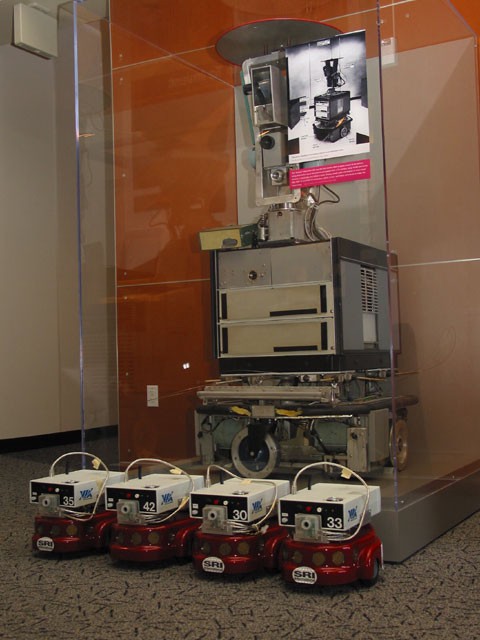
One of the key advances that Shakey brought to the technology table was in its software architecture. Shakey’s control software was structured into 4-layers. This layered architecture was the first time it was used for robotics and it was to become a model for future generations of robots.
Also, taking Shakey to new heights was the ecosystem comprising computer vision, advanced navigational methods and planning software.
The combination of AI programming that was based on pre-programmed software with error modulation, coupled with the navigation and vision (image) analysis, gave Shakey the power to understand and model its environment. Uniquely, at the time, the model could be updated by both Shakey itself as well as the end-user.
Behind this capability was the AI program called the Stanford Research Institute Problem Solver or “Strips”. Strips enable the programmer to describe the ‘world model’ using a system of “well-formed formulas (wffs)” aka, a mix of objects, actions, preconditions, and effects. Using this methodology, an initial state is set and the goal (with sub-goals based on relevant actions) created. The model is based on the ethos of precondition and effect. You start off ‘near the door’ and end up in the adjacent room.
Not so shakey futures with shakey tech
Shakey was novel and ground-breaking. And so spawned many future technologies. The first ‘son of Shakey’ was “Flakey,’’ a robot that used fuzzy logic and goal-orientated behavior. And the grandchildren of Shakey were “swarm-bots” an autonomous swarm robot project which used 100 robots to work collaboratively to map an area.
A post-Shakey world has seen the development of systems based on ShakeyTech, including:
- Natural Language interactions such as Siri;
- Shakey’s ideas on computer vision helps drivers to stay in their lane
- Driving directions on your phone or sat nav uses the A* navigation algorithm designed for Shakey; and,
- NASA’s exploration Mars Rovers use ShakeyTech. (autonomous Rover navigation)
Thank you, Shakey
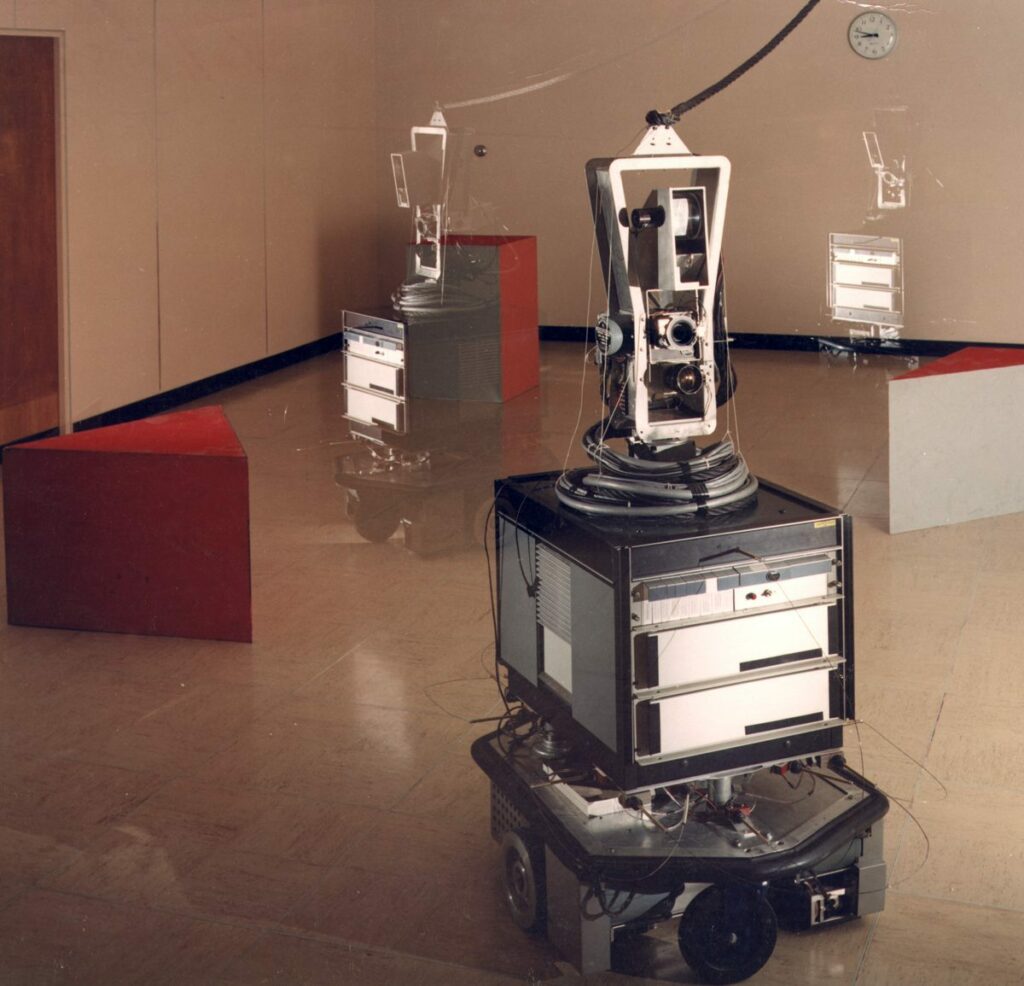
In February 2017, as Shakey became a middle-aged Robot at 51, it was awarded the prestigious 174th IEEE Milestone for technical achievements. A plaque is proudly displayed in the Computer History Museum in San Jose, California. Shakey received this honor proudly; the same honor previously given to world-changing technologies including Marconi’s Reception of Transatlantic Radio Signals in 1901.
Shakey may have been given the name because of its less than stable gait, but it shook the world for altogether different reasons. Shakey now stands proud and strong as a shining example to AI scientists across the world today. A Shakey past is becoming a firm and exciting future for AI.
Shakey, we salute you!
View Bill Gates’ comment on how Shakey’s AI inspired him from a young age in his SVA Speaker Series conversation:
“The holy grail of software is Artificial Intelligence, either in a pure software capability or in a physical robotic capability. Going back to the 60s, the Stanford Research Institute (SRI) had their robot, Shakey. I remember seeing that when I was in 10th grade and saying, “That’s what I want to work on — making that robot a lot better.”
Resources
Shakey’s IEEE Milestone page: https://ethw.org/Milestones:SHAKEY:_The_World%E2%80%99s_First_Mobile_Intelligent_Robot,_1972
List of IEEE Milestones: https://ethw.org/Milestones:List_of_Milestones
Fikes, R. E., and N. J, Nilsson, “STRIPS: A New Approach to the Application of Theorem Proving to Problem Solving”, Artificial Intelligence 2 (1971) pp 189–208. (STRIPS): http://ai.stanford.edu/users/nilsson/OnlinePubs-Nils/PublishedPapers/strips.pdf
